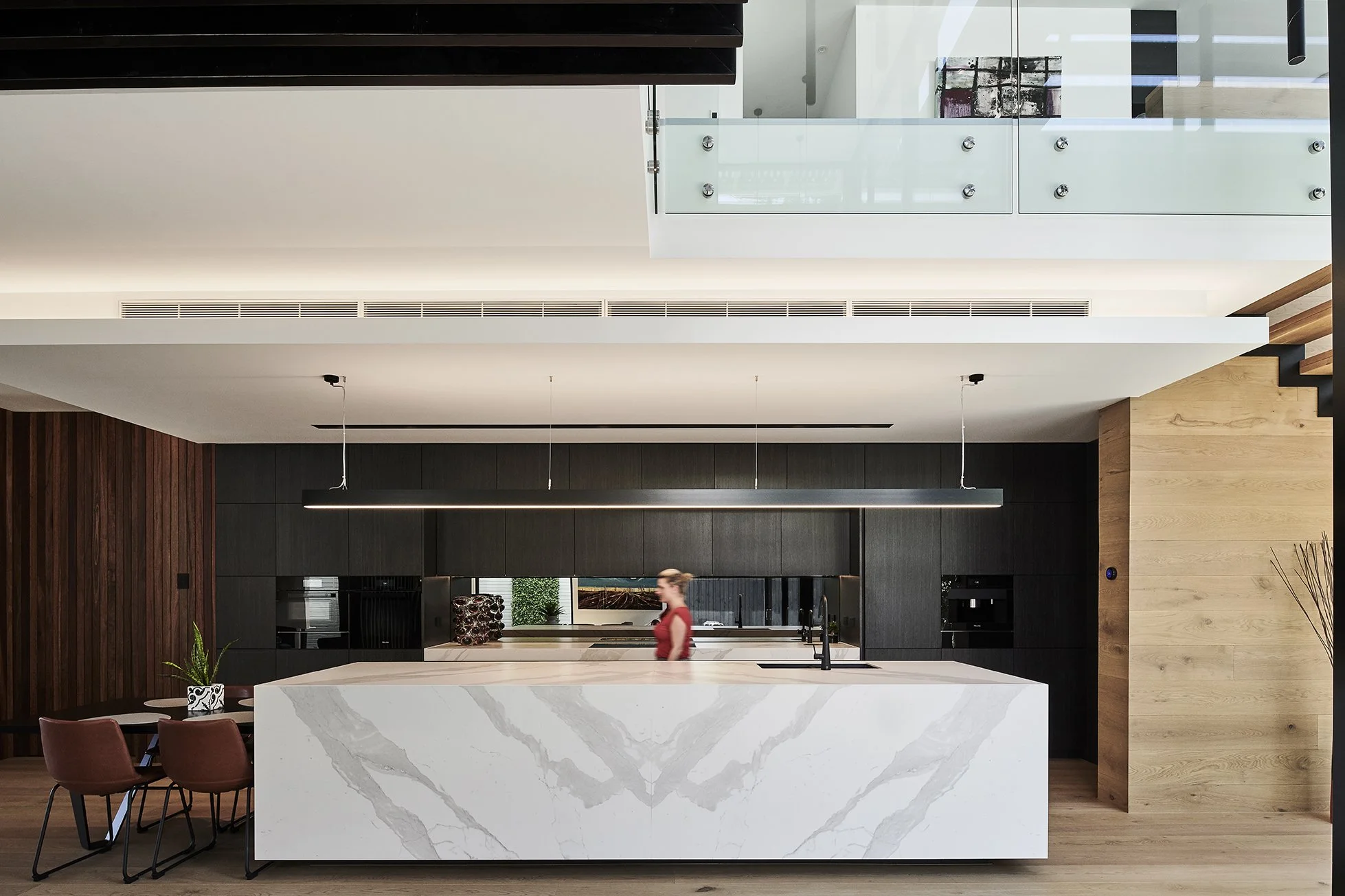of the five types of light, indirect light is the most misunderstood
First, SOURCES of light...
Each type of fitting radiates light differently and causes unique effects. The 3 basic shapes are:
Point sources
Line sources and
Area sources
Point is highly directional (you can read more in our blog about directional light . Line sources are usually diffuse and sometimes controlled. Area sources are diffuse and omnidirectional.
THEN, TYPES of light...
Selecting the type of light you want is the first step in your design process. Once you know what you want the light to do, you can select the right fitting to do it.
With these 3 basic sources, 5 different types of light can be created (read more here) – so together providing us with over 15 essential effects, before we start blending them into a palette of thousands.
In this post, we’re going to look at indirect light, what is can do and how we consider it when designing light.
Indirect LIGHT, or LIGHT THAT GOES UP
Indirect light in a home refers to lighting that is not directly shining on an object or surface. Instead, it is diffused or reflected off other surfaces to create a more ambient and softer illumination.
Indirect light is usually more even, and less harsh than direct light, which can be beneficial for creating a cosy and inviting atmosphere in a home.
Indirect light can be achieved through several methods, including:
Reflected light: Light bounces off a surface, such as a wall, ceiling, or floor, and illuminates the room indirectly.
Diffused light: Light is dispersed through a medium, such as a lampshade, or a frosted glass fixture, to create a soft glow. (NOT a pancake downlight - they are diffuse, but they are not soft!)
Natural light: Light that enters the home from outside, such as through a window, can also create indirect lighting if it's reflected or dispersed by interior surfaces.
Indirect lighting can also help reduce glare, shadows, and harsh contrasts, which can strain the eyes and be uncomfortable for prolonged periods.
Indirect lights are often wall mounted and emit light upward, in turn bouncing light off the ceiling into the space. This type of light can come from wall lights, suspended pendant lights, table and floor lamps.
Indirect light creates comfortable low-contrast soft light that psychologically enlarges a space. It is a key type for the task/ambient lighting of a living spaces with the indirect light providing ambience, and additional direct light providing task
Some people experience indirect light as bland and dreary so they need to add task lighting, other focal/decorative light should be considered to add visual interest and relief from the diffuse nature of a completely indirect design.
One of the most common questions we face in lighting design when working with indirect light is – is it enough light? As we’ve discussed previously (Read our blog - How Much is Enough Light?, “enough” is a difficult measuring stick, however we can safely say that with current LED technology, there are indirect light fittings that produce so many lumens we can confidently say yes, it’s enough.
In fact, we have many examples where indirect light has been used, and when installed is regularly dimmed down to as little as 10% to provide a gentle glow in the room. With this type of illumination, dimming the light is critical to being able to balance the mood of a room.
Fitting selection is critical to this confidence. As more and more indirect wall lights come into the market, it becomes easier and easier to be sold something that does not perform as you hope.
Selecting on price for indirect light is not advised – performance is everything, and if that one light fitting is replacing 6 downlights, then it’s cost will be higher. But if you compare it to the total cost of installing those 6 downlights, it usually balances out.
As always, independent professional advice will give you the confidence you need to implement this type of lighting into your home - and the rewards are spectacular light for living.









